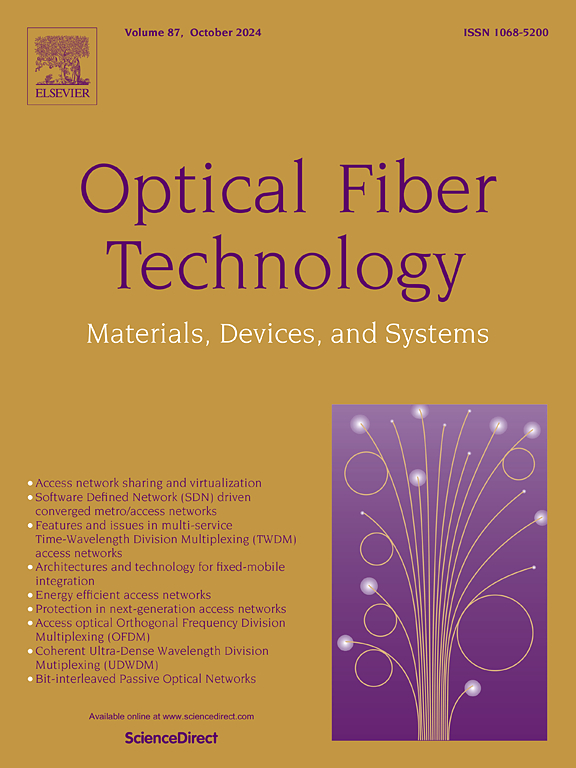Machine learning-Assisted spiral fiber Bragg Grating-Based flexible dual-parameter sensing
IF 2.6
3区 计算机科学
Q2 ENGINEERING, ELECTRICAL & ELECTRONIC
引用次数: 0
Abstract
The ability of flexible sensors to bend or fold freely offers great advantages in sensing ability and adaptability to harsh environments. Moreover, compared with typical electrical effect based flexible sensors, optical based fiber Bragg grating (FBG) flexible sensors offer much greater ease of networking and resistance to electromagnetic interference, making them suitable for distributed multi-point strain measurements in complex environments. In this paper, two FBGs with no overlapping reflective spectra are shallowly embedded in the surface layer of a flexible thin-cylinder substrate to form a dual-parameter flexible strain sensor. However, it is crucial for the changes in direction and curvature parameters of FBG strain sensors under deformation to be accurately understood to characterize the current deformation state of the flexible sensor. Moreover, conventional peak tracking demodulation methods often fail to account for distortion in the reflected spectrum of a spiral FBG under stress. Hence, a multi-output convolutional neural network learning model is constructed to simultaneously identify the bending direction and curvature radius of the flexible sensor using machine learning methods. Experimental results show that the flexible dual-parameter FBG sensor has precisely recognize angles to within 2° across a 360° range, with a curvature recognition accuracy of 99.1%, offering precision sensing performance suitable for highly demanding application scenarios such as bionic robots and flexible medical devices.
基于机器学习辅助螺旋光纤布拉格光栅的灵活双参数传感技术
柔性传感器能够自由弯曲或折叠,在传感能力和恶劣环境适应性方面具有很大优势。此外,与典型的基于电效应的柔性传感器相比,基于光纤布拉格光栅(FBG)的柔性传感器更易于联网和抗电磁干扰,因此适合在复杂环境中进行分布式多点应变测量。本文将两个无重叠反射光谱的 FBG 浅嵌入柔性薄圆柱基底的表层,形成双参数柔性应变传感器。然而,要准确了解 FBG 应变传感器在变形过程中的方向和曲率参数变化,对于表征柔性传感器当前的变形状态至关重要。此外,传统的峰值跟踪解调方法往往无法考虑螺旋 FBG 在应力作用下反射频谱的失真。因此,我们构建了一个多输出卷积神经网络学习模型,利用机器学习方法同时识别柔性传感器的弯曲方向和曲率半径。实验结果表明,柔性双参数 FBG 传感器可在 360° 范围内精确识别 2° 以内的角度,曲率识别精度高达 99.1%,其精确传感性能适用于仿生机器人和柔性医疗设备等高要求应用场景。
本文章由计算机程序翻译,如有差异,请以英文原文为准。
求助全文
约1分钟内获得全文
求助全文
来源期刊

Optical Fiber Technology
工程技术-电信学
CiteScore
4.80
自引率
11.10%
发文量
327
审稿时长
63 days
期刊介绍:
Innovations in optical fiber technology are revolutionizing world communications. Newly developed fiber amplifiers allow for direct transmission of high-speed signals over transcontinental distances without the need for electronic regeneration. Optical fibers find new applications in data processing. The impact of fiber materials, devices, and systems on communications in the coming decades will create an abundance of primary literature and the need for up-to-date reviews.
Optical Fiber Technology: Materials, Devices, and Systems is a new cutting-edge journal designed to fill a need in this rapidly evolving field for speedy publication of regular length papers. Both theoretical and experimental papers on fiber materials, devices, and system performance evaluation and measurements are eligible, with emphasis on practical applications.
 求助内容:
求助内容: 应助结果提醒方式:
应助结果提醒方式:


